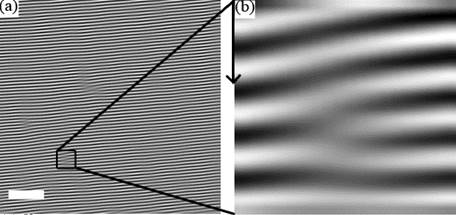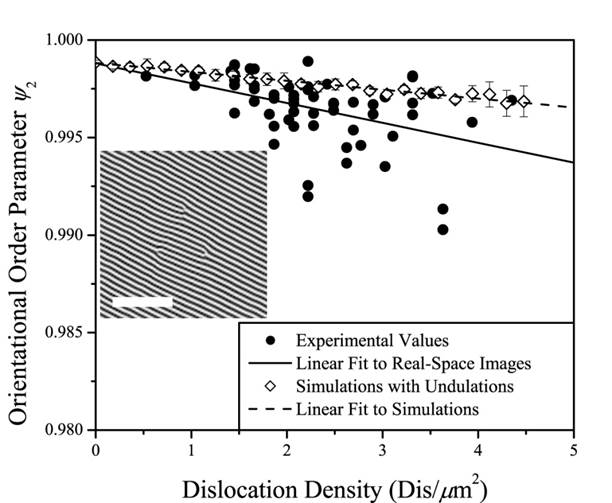Block
copolymer thin films are effective
templates for
fabricating
large arrays of nanoscopic
objects; for example, polymers which self-assemble into cylinders lying in the
plane of the film yield striped patterns, which can be replicated in metal to
yield nanowire grids which effectively polarize the short-wavelength
ultraviolet light used in today’s advanced production photolithography. But other applications demand more perfect
order of the striped-pattern template:
perfectly straight and unbroken wires.
The most obvious defects in these block copolymer patterns are isolated
dislocations– cylinders which start or stop, which would become breaks in wires
fabricated from such a template. PPCM
researchers have found that tight control of the film thickness and annealing
regimen can reduce these dislocations to low levels, but once these defects are
largely eliminated, a previously unanticipated factor emerges to limit the orientational
order: small-amplitude undulations of
the cylinders relative to their axes, limiting Ψ2 to 0.998 (0.2% below the value of
1 for a perfect pattern).

Above,
(a): filtered atomic force microscopy
(AFM) image of a shear-aligned thin film of a cylinder-forming block copolymer,
bar = 200 nm, PS cylinders are white in black PEP matrix. Four dislocations are evident in the image,
one of which is within the square; (b) blowup of the square, showing the
dislocation core (distance between white cylinders = 19 nm). Below:
orientational
order falls off linearly with dislocation density (•,
experiments), at approximately the rate predicted by a simple continuum
simulation (◊, image from simulation shown as
inset). But even at zero dislocation
density, the order is not perfect (Ψ2
cylinders.
